Thought Experiment: Where Is It Worth Saving Weight on a Trail Bike?
Trail bikes can be a strange proposition. The days of the sub-30lb goal seem to be shrinking into the distance in our mirrors as we move away from the notion that weight is one of the main parameters of performance.
The problem, if it even is a problem, is that the modern trail bike is simply so capable. Adding slightly heavier components to keep up with the bike's capabilities can be a slippery slope. First, it might be a burlier fork, then heavier tires, and maybe an insert. Before you know it, your trail bike is more of the broadsword than the rapier you imagined.
But where, if anywhere, is the place to save weight? What components yield the greatest ratio of performance per gram? For this article, I’ll be working within a certain brand's range to try and keep things consistent. Also, I’ll also often be going for top of the line equipment if only because it removes a variable when it comes to trimming excess weight. Also, for argument's sake, I’ll consider the total weight of the bike to be a respectable 14.5 kg (32 lb). I know it is something of a contradiction to have a set weight for a bike when we're talking about the changing components to alter the weight.
My last caveat is that this bike will be a trail bike that might be shorter on travel than its enduro counterparts but it’s still meant to be ridden aggressively on technical trails.
Forks
In my experience, the trouble with aggressive trails bikes is that they often soon outstrip their fork, especially for heavier riders or those who have choppy terrain on their doorstep.
Of course, the slacker the head angle the more it requires in terms of stiffness. I've found that it tends not to be torsional stiffness that gets affected, so much as fore and aft stiffness and the front wheel wants to come underneath the headtube under heavy braking.
So, how much weight is added going from a RockShox Pike Ultimate to a Lyrik Ultimate?
Based on a 29” model, the weight penalty in itself is 238g. Going to a Zeb, should you really want to, would be a 398g increase. The travel can be adjusted internally, although it should be noted the Zeb would be at 150mm, where the Pike tops out at 140mm in the 29er.
Going from a Pike to a Lyrik is a 13% weight increase. It represents a 1.6% increase compared to the total weight of the bike.
Going from a Pike to a Zeb is a 22.7% increase. It represents a 2.7% increase compared to the total weight of the bike.
Going from a Pike to a Zeb is a 22.7% increase. It represents a 2.7% increase compared to the total weight of the bike.
What about Fox’s range? This time, let’s look at the claimed weight of their range going from the 34 to 38, again in 29”.
Starting with a weight of 1820g for the non-StepCast 34, going to a 36, would be a 330g increase. Should that not be aggressive enough it would be an additional 190g to go to the all-out 38 enduro fork. Again, you may well have issues with too much additional travel. The 34 has a maximum of 140mm, whereas the 36 has a minimum travel of 150mm and the 38 160mm.
Going from a 34 to a 36 is a 18.1% weight increase. It represents a 2.3% increase compared to the total weight of the bike.
Going from a 34 to a 38 is a 28.5% increase. It represents a 3.6% increase compared to the total weight of the bike.
Going from a 34 to a 38 is a 28.5% increase. It represents a 3.6% increase compared to the total weight of the bike.
Shocks
Working with a 210x55mm shock, a Fox DPS, which is a particularly light monotube shock, weighs 278g. To add a piggyback with their Float X model would add 175g. If you wanted to go to a Fox DHX coil from the DPS, including an 450lb SLS spring, you would be looking at adding 485g.
Going from a Fox DPS to a Fox Float X is a 62.9% increase but that represents a 1.2% weight increase compared to the total weight of the bike.
Going from a Fox DPS to a Fox DHX Coil is a 174.5% increase. It represents a 3.3% weight increase compared to the total weight of the bike.
Going from a Fox DPS to a Fox DHX Coil is a 174.5% increase. It represents a 3.3% weight increase compared to the total weight of the bike.
And with RockShox, how do their weights stack up, especially within the trail-friendly Deluxe line? Working with a 210x50mm shock, a Deluxe Ultimate weight 340g. To add a piggy-back would add 113g. If you wanted to go to a coil shock, including 400g for a spring, you would be looking at 806g.
Going from a Deluxe Ultimate to a Super Deluxe Ultimate is a 33% increase but that represents only a 0.8% weight increase compared to the total weight of the bike.
Going from a Deluxe Ultimate to a Rockshox Super Deluxe Coil Ultimate is a 137% increase. It represents a 3.2% weight increase compared to the total weight of the bike.
Going from a Deluxe Ultimate to a Rockshox Super Deluxe Coil Ultimate is a 137% increase. It represents a 3.2% weight increase compared to the total weight of the bike.
Wheels
Using Hunt’s alloy wheel range and starting with their XC Wide 1647g wheels could be an option for trail riders trying to shed some weight. To go to their Trail Wide wheels would see a weight increase of 184g. To go all the way to the Enduro Wide wheelset from the XC Wide would be a difference of 503g.
Going from the XC Wide to the Trail Wide is a 11.2% weight increase. It represents a 1.27% increase compared to the total weight of the bike.
Going from the XC Wide to the Enduro Wide is a 27.8% increase. It represents a 3.4% increase compared to the total weight of the bike.
Going from the XC Wide to the Enduro Wide is a 27.8% increase. It represents a 3.4% increase compared to the total weight of the bike.
Tires
For the sake of simplicity, we’ll talk about tires as a pair. A pair of 2.4” Nobby Nics in the Super Ground casing weighs 1780g. To go for something more aggressive like the 2.35” Hans Dampf in Super Trail would see a weight increase of 370g. If you wanted to prioritise grip even further then a set of 2.4” Magic Marys, also in Super Trail, would see a weight increase of 660g over the Nobby Nics.
Going from the Nobby Nics to the Hans Dampf is a 20.8% weight increase. It represents a 2.6% increase compared to the total weight of the bike.
Going from the Nobby Nics to the Magic Marys is a 37.1% increase. It represents a 4.6% increase compared to the total weight of the bike.
Going from the Nobby Nics to the Magic Marys is a 37.1% increase. It represents a 4.6% increase compared to the total weight of the bike.
Brakes
Some Shimano XT brakes, again as a pair but not including rotors come in two versions with two or four pistons. A set of two piston BR-M8100 weighs 571 grams.
The BR-M8120 four piston brakes weigh an additional 104g or 18.2%. It represents a 0.7% increase compared to the total weight of the bike.
With brakes, there is another large variable to change - rotor size. So, assuming we kept the weight the same but changed the rotor size what difference would there be?
Assuming the trail bike has 180mm as standard then a set of 180mm rotors is not only the smallest you can run but also means there is no need for adaptors. A set of Shimano XT RT86 six bolt rotors would weigh a combined 290g. A 200/180mm set up would weigh 63g more. A 200/200mm setup would weigh 126g more than the 180mm rotors.
Going from the 180/180mm setup to the 200/180mm setup is a 21.7% weight increase. It represents a mere 0.4% increase compared to the total weight of the bike.
Going from the 180/180mm setup to the 200/200mm setup is a 43.4% weight increase. It represents a mere 0.9% increase compared to the total weight of the bike.
Going from the 180/180mm setup to the 200/200mm setup is a 43.4% weight increase. It represents a mere 0.9% increase compared to the total weight of the bike.
Drivetrain

How much weight, compared to the total weight of our bikes, does a more expensive drivetrain really save you?
Drivetrains are a little bit different in that they’re not so specific to a bike's intentions. If you do care though, how much weight can you save with a different drivetrain?
Of course, with drivetrains weight is far from the only indication of performance. Unlike the other products compared, where they all hold a similar place in the brand's product hierachy and cost similar amounts. But if you were interested, what would the difference be if we compare weight increase to cost reduction? For reference, a Deore groupset retails for $296, SLX for $410, XT for $612 and XTR for $1,375.
XTR to XT represents a 15.9% change which is equal to a 247g increase. This would be a 1.7% increase to the total weight of our bike. It is a 55.5% reduction in cost.
XTR to SLX represents a 20.7% change which is equal to a 322g increase. This would be a 2.2% increase to the total weight of our bike. It is a 70.1% reduction in cost.
XTR to Deore represents a 35.4% change which is equal to a 551g increase. This would be a 3.8% increase to the total weight of our bike. It is a 78.5% reduction in cost.
XTR to SLX represents a 20.7% change which is equal to a 322g increase. This would be a 2.2% increase to the total weight of our bike. It is a 70.1% reduction in cost.
XTR to Deore represents a 35.4% change which is equal to a 551g increase. This would be a 3.8% increase to the total weight of our bike. It is a 78.5% reduction in cost.
What about SRAM - what are the price and weight differences between mechanical and electronic gearing? Let’s look in particular at the recently released SRAM GX AXS and its mechanical counterpart.
The GX AXS derailleur and shifter weigh a total 522g and have an RRP of $600. The mechanical GX shifter and derailleur weighs 462 grams, including cable and housing and cost $170.
Upgrading from GX to GX AXS represents a 13% change which is equal to a 60g increase. This would be a 0.4 increase to the total weight of our bike. It is a 253.9% increase in cost.
Frame
So, what if you’ve gone for the burliest, and heaviest option for each part so far. If you were to change the frame itself what kind of weight differences are there typically? In this instance, let's look at a 29" Nukeproof Reactor in a size Medium.
A Mega weighs 220g more, which is an increase of 1.5% increase to the total weight of our bike.
A Giga weighs 280g more than a Reactor, which is an increase of 1.9% increase to the total weight of our bike.
A Giga weighs 280g more than a Reactor, which is an increase of 1.9% increase to the total weight of our bike.
So, essentially, going from a trail bike frame to a all-out super-enduro frame represents half of the change, in the context of the total weight of our bikes, from going between XTR and Deore.
Where and why?
If it were my 14.5 kilogram trail bike, where do I think is the most efficient place, performance per gram, to make a bike more capable? It's a bit of a cop-out, but it really depends on where you're riding. Somewhere steep, my answer is brakes, somewhere rough, that changes to suspension...
If we set ourselves to goal of an aggregate 5% total weight gain then I would opt for:
Stopping Power (0.4% - 63g) - I think adding larger rotors improves the most performance for the smallest trade-off. 200/180mm rotors are a great compromise of power and heat management, even on two pots. They'll also combine with my next choice to yield greater performance yet. There's no point in have large amounts of braking power if you don't have any grip. I know four-piston brakes benefit those on long and arduous descents, but hopefully my large rotors will do a lot of the heavy lifting in that regard.
Goldilocks tires (2.6% - 370g) - Without a doubt, tires are one of the areas that can dictate a whole bike's performance. They're the bike's sole contact patch unless you opt to use your face, and all the burliest componentry in the world won't save you have no grip. However, they're also heavy and the weight can quickly add up. For general trail riding a middle-of-the-road tire, in this instance, a Super Trail Hans Dampf, offers a good blend of security, platform and tread depth. Trail bikes can end up chasing their own tail with heavy wheels and tires and lose the sharpness that makes them such a pleasure to ride in the first place.
A Stiffer Fork, in this case a Lyrik (1.6% - 238g) - With heavier braking and more grip, it might not be too long before you want a stiffer fork. I think that a burlier fork goes a long way to helping a bike feel consistent and planted on rough fast trails, especially when applying the front brake. However, I don't think any of the new larger-stanchioned enduro forks are ever really needed on a trail bike. Something such as a Lyrik or 36 is ample, especially with the Charger and Grip2 dampers being as good as they are. At just 1.2% a piggyback shock would be the next on the list but sadly it would take me outside my 5% weight change.

Ripping through a singletrack trail on an efficient bike, whilst maybe not as extreme as enduro or downhill, can be one of the most rewarding types of riding.
What didn't I chose?
I haven't gone for the most extreme option in any case. I know there is an argument to say that "travel weighs nothing", and although it's not something I disagree with, often the choices made to enable larger amounts of travel do add up in terms of weight. Although interestingly enough, not always on the frame.
This problem can be approached two ways - if you're somebody that runs downhill tires, inserts, a 38 and the biggest brakes you can find, then I see little point in opting for a shorter travel frame. By that point you've already chosen all the heavy bits, you may as well lean into it.
However, if you're never going to open the floodgates and run that sort of equipment then a trail bike with heavier parts as needed can make a wonderfully versatile bike.
When running heavier wheels it often isn't a noticeable performance change that you're chasing, and the benefit is normally increased resistance to damage. However, adding rotational mass can really compromise a bike's feel and turn a bike from a pleasure to a chore. For me, on a trail bike, I'd rather just take a measured approach when riding particularly rough trails and enjoy all the benefits that they can yield.
Special thanks to Competitive Cyclist for helping me fill in the gaps for the one or two product weights that we didn't have on PB record.
So, if we're trying to keep our weight as low as possible, where to spend and where to save? What has the bigger impact on performance? A large change like aggressive tires? Or a combination of changes like a piggyback shock, big calipers on larger rotors and a burlier set of wheels?
With 5%, or around 750g, what would you add to beef up this trail bike?
At what point are we selling ourselves short and start to think about looking at a more aggressive frame? Or are we looking for short-travel-pop rather than the brutish charms of a longer travel bike?
Author Info:
Must Read This Week
[UPDATED] Final Elite XC Results & Overall Standings from the Mairiporã XC World Cup 2024
41896 views
41896 views
Sign Up for the Pinkbike Newsletter - All the Biggest, Most Interesting Stories in your Inbox
PB Newsletter Signup
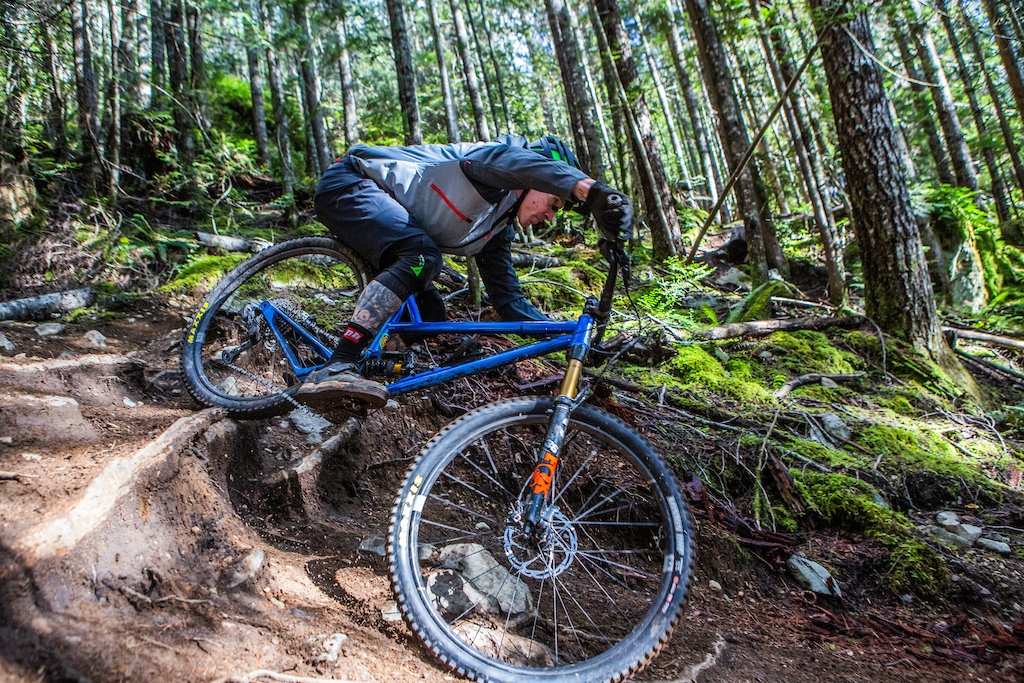



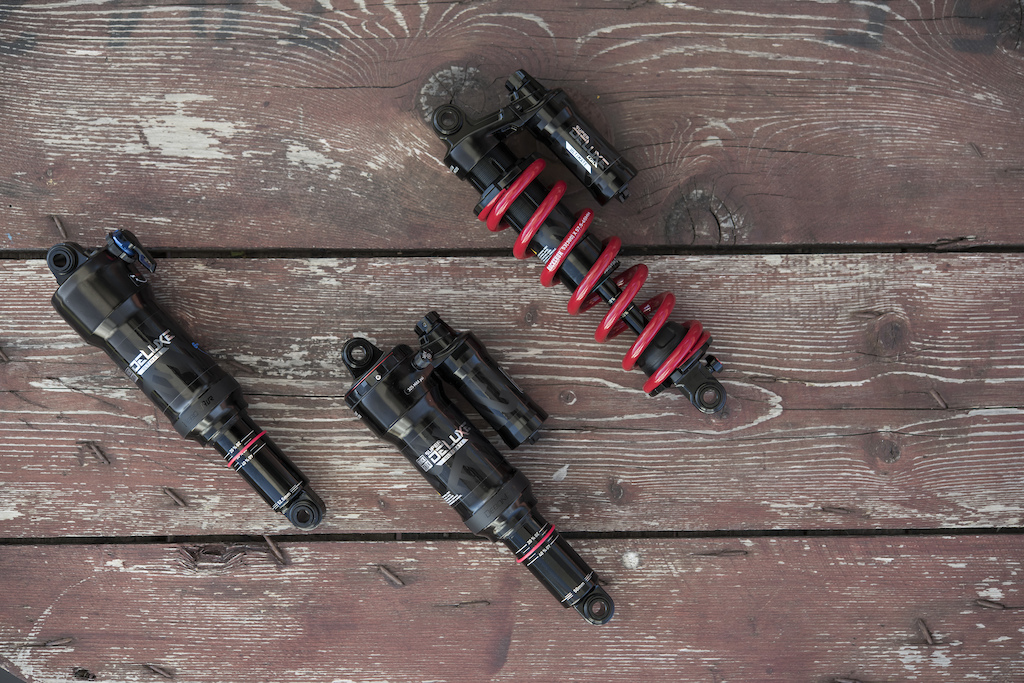

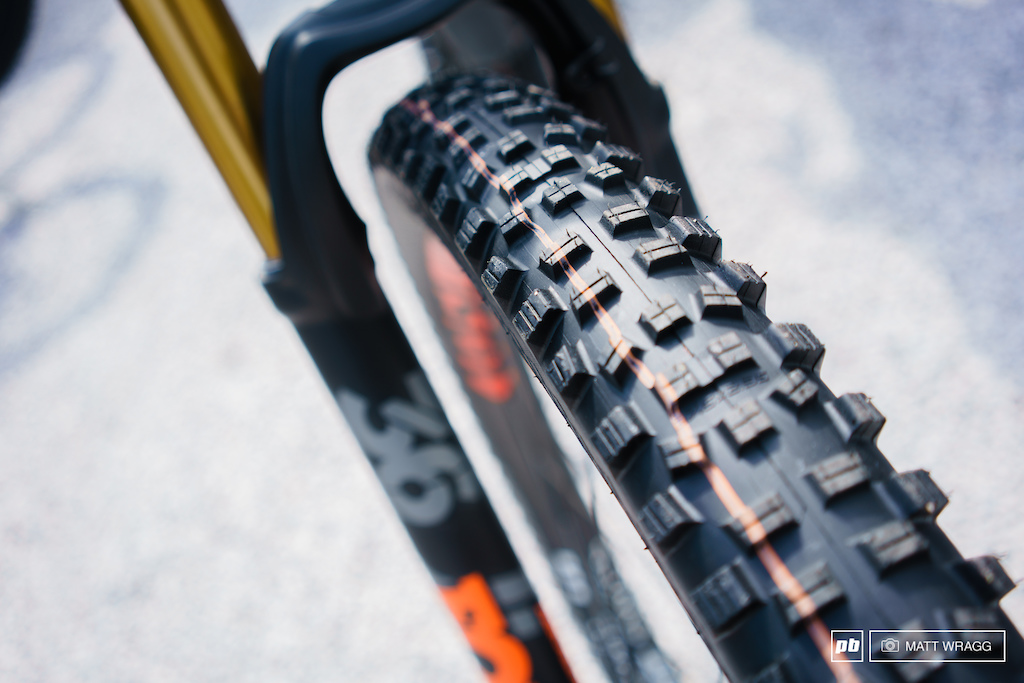
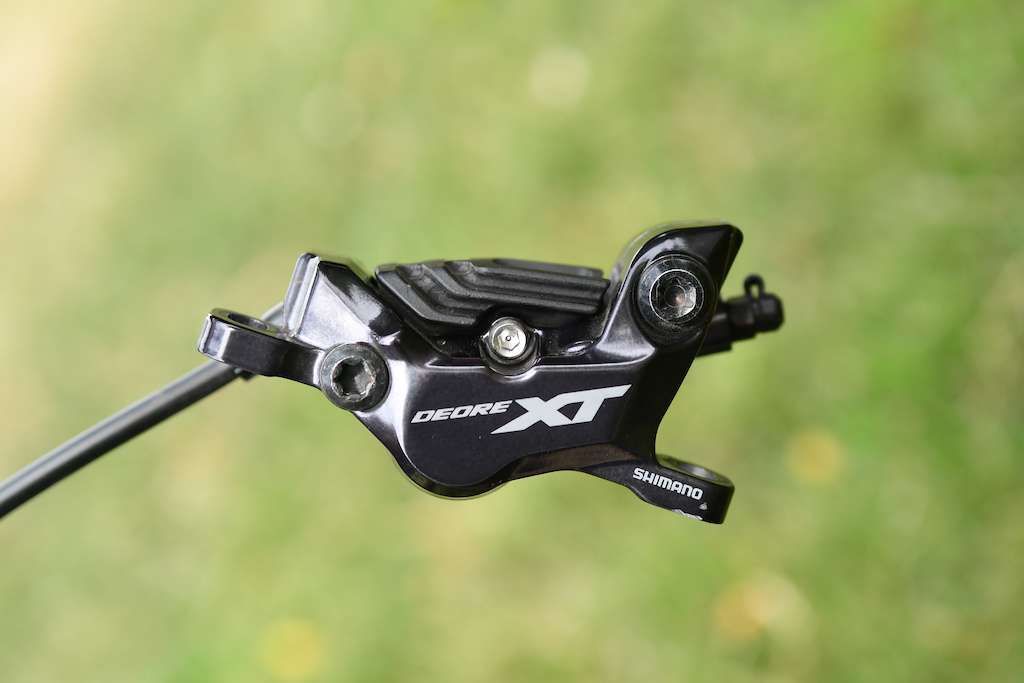

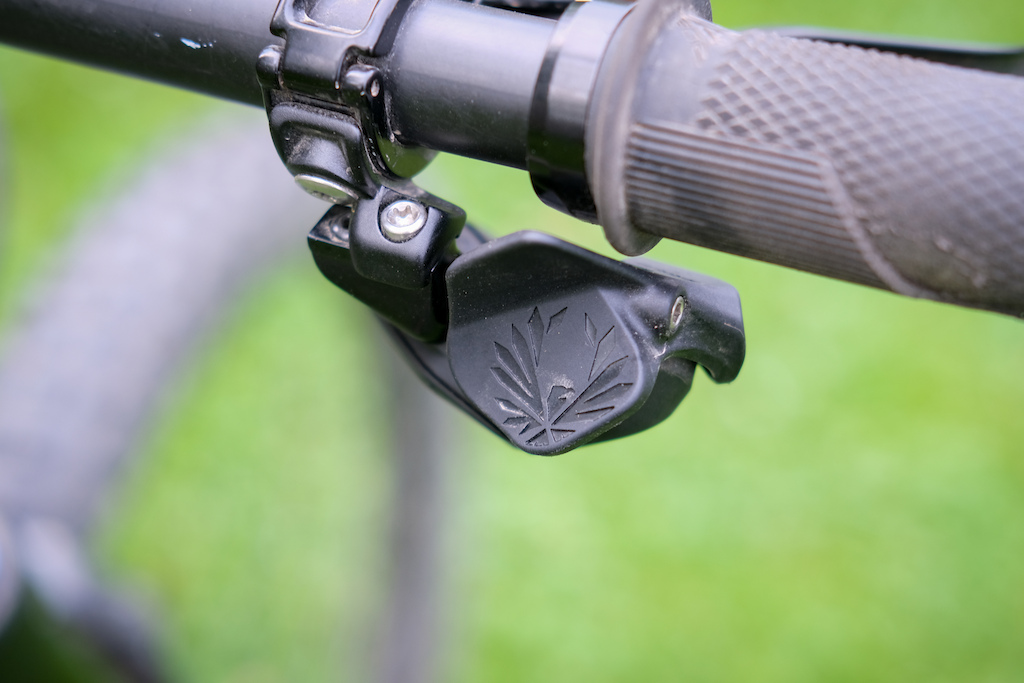
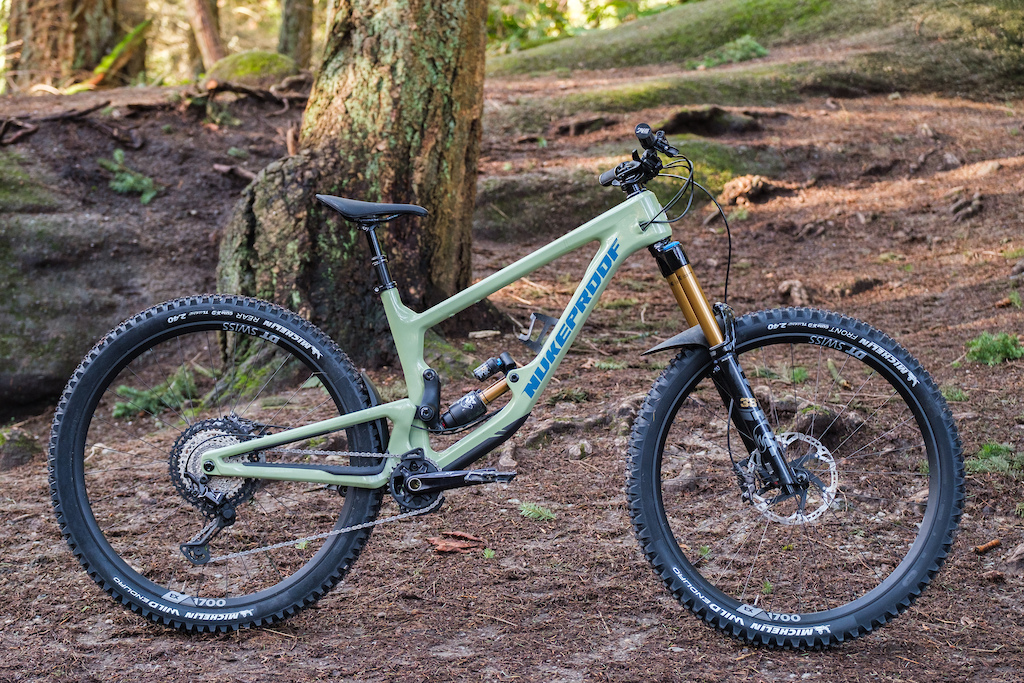
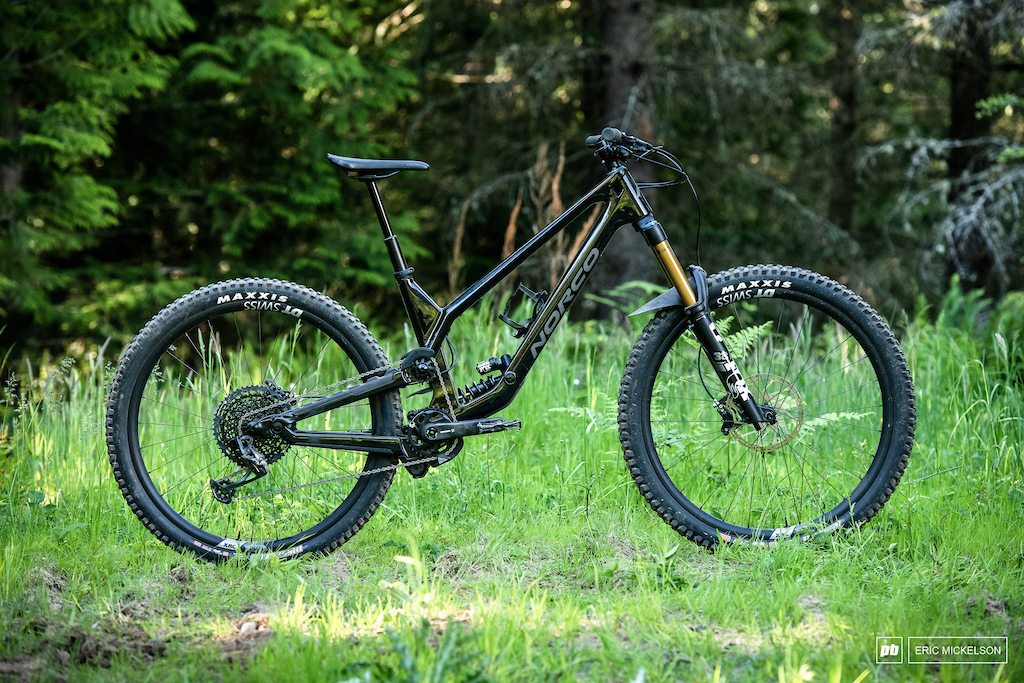

No it's not equal and yes it's about feel.
Imagine everyone working on being better instead of buying better... I cant even - Im gonna need to call in sick today.
oh gee golly, I would HATE to look like I have a literal and uncontrollable illness, that tons of normal and good people struggle with daily!!!
how do you people have so much f*cking hate in you??
Ask yourself the same question.
Outside of wheel weight, its really not worth trying to cut weight anywhere on a trail bike in that you really won't feel it or you'll end up with something that is uber expensive for very little gain. After all, you aren't racing your trail bike uphill, right?
Which is why I bought a 27lb Downcountry bike 9 months ago that now weighs over 31lbs.
Tires make the biggest difference in performance, but they also make the bigger difference in drag and rotation weight. It would only be logical in that case to tailor the tires for the expected conditions and ride type.
However, there also seems to be a shift even within WC XC to run some sort of insert. I might be inclined to run both wheelsets with inserts, but also run a lighter insert in the "trail wheels". So you're not giving up support and/or puncture resistance while being able to run a slightly lower pressure, but getting a faster rolling tire as well.
People who do this regularly, do you guys own two sets of rotors and cassettes?
This is very interesting - I'm going to get a second wheel set and try this out! Beats the expensive endeavor of trying to go all weight weenie on frame and components
Note to bike Mfgs: Spec Hayes Dominion!
My point is that while the 4 pistons have they're place, the majority of people don't need that much power.
So anyway it's not as simple as "2 piston bad, 4 piston good". IME 2 piston brakes are fine for like 90% of riding. By the time the brakes start to fade I usually need to stop and relieve my arm pump anyway. But for racing / bigger bikes obviously it makes sense to have the little bit of extra power.
docs.google.com/spreadsheets/d/1sjPSmOYbhjDBFxcvXVw1ufKfowEBu1AKh8sB6T8e24Y/edit?usp=drivesdk
My point is that yes, obviously more piston area = more power (holding all other things constant), but most of these 4 piston offerings don't actually increase the piston area by that much. Lots of people talk about it as if 2x the pistons means ~2x the power when really we're talking about a 5-15% increase in force at the pad.
Obviously this is enough to matter if you're racing, but there aren't really any trail riding scenarios where 2 vs 4 pistons means the difference between safe/unsafe or rideable/unrideable. So in the context of "why are mfrs still specing 2 piston brakes on any bikes".... it's because they're cheaper/simpler and unless the bike is meant for DH/park/enduro racing it honestly doesn't matter that much.
Btw “power isn’t relative to number of pistons” is absolutely correct. Two 1 cm pistons is less area than one 2cm piston. Maybe stop trying to prove how smart you are and actually read ppls posts.
@southoftheborder posted the link late last year and credited it to Udi at Ridemonkey.
My difficulty in accepting that the area of a 2cm piston is greater than that of two 1cm pistons is enough to keep me out of this overheated discussion
Two 1cm pistons: 2*pi*1^2/4 = 1.57 cm^2
One 2cm piston: pi*2^2/4 = 3.14 cm^2
You're making the rest of us engineers look bad... you're not the only one with a degree, and I'd be a little more careful about advertising that fact when you're making incorrect statements (and being a dick) online.
"“power isn’t relative to number of pistons” definitely incorrect. Pb users should stick to their dental tools lol"
"'power isn’t relative to number of pistons' easily the dumbest thing I have read in the past month."
"“Power isn’t relative to number of pistons” boy the rest of the engineers and I sure got a good kick out of that one lol"
Objectively wrong, 3x in the same thread.
Where was that hard data you provided again?
"More pistons mean more piston surface area."
"Increase piston surface area, increase psi at the pad"
Yes, which is why, based on the DATA in the sheet I provided, I stated that there's not that much difference in piston area between most 2 piston and 4 piston brakes, all other things being equal.
Guide vs Level (2.6%)
Cura vs Cura 4 (12%)
M810 vs M785 (6%)
X2 vs E4 (6%)
So it's completely understandable why riders and bike brands "feel" they don't need a 4 piston brake for normal trail bikes - it's a big cost add for a marginal improvement. And even if you do "feel" you need more braking torque, sizing up your rotors produces a bigger improvement for less cost. DH/Enduro/park riding are a different story and rotor size is usually already maxed out on those bikes, so 4 pistons are the obvious choice there.
You can have different "feelings" about your brakes, I'm sure you're running the sickest, most powerful Shigura setup anyone's ever seen.... But I still haven't seen a shred of quantitative data or productive, non-dickish discussion from you in this convo so I'm gonna stop here.
The only time I think a big shock really matters is big drops and shuttle/park days.
Here again, it's a perfect use case for two options. Get a nice air shock for daily riding, and a cheap coil for park days.
PS - if you want to drop some serious weight on your bike.. take out all the batteries.
I focused heavily on what I liked and disliked on my carbon frame and searched for the best match, regardless of material. I now have an alloy frame that has a better seated pedaling position, as stiff or stiffer frame in relation to the BB/suspension area, and a taller stack so I sit a little higher, and longer chain stays help place me more center on the bike. Not only can I pedal uphill just as good, but I feel less tired and I can descend even faster.
A little bit of weight has it's advantages if you know what you're looking for.
The Fuel has a very low stack height and short stays. I was either very leaned forward when climbing while seated, or weighting the rear of the bike too much when descending. It was still a really good bike overall, and I will admit, it could get up and go when you got on it, mainly sprinting, but when seated and pedaling the Banshee is a dream. Plus the Banshee descends WAY better.
I also re-weighed the Banshee with a proper scale -- 34.04 lbs. Not bad for a beefier alloy bike.
The Banshee has the
At 37lbs it feels way more stable and sure-footed in the steep, fast, rough sections - the sections that I love. Ya its tougher to pedal up but I dont mind.....I only climb to go down.
[Reply]
If I drink lots of beer, I kill brain cells. This makes my (high up) head lighter. It also makes gut hang out and down, further lowering my centre of gravity.
Drinking beer FTW.
What the f*ck happened to us!
If you need a 160mm 29er to ride your trails, you are either racing (in which case, go for it), or you should spend that upgrade money on coaching..
I think the ultimate goal would be a 10-45 11 speed cassette that weights around 300g and doesn't cost a fortune. It's good to want.
The only (rare) exception is when you have a light bike except one or two really heavy components that aren't expensive to swap.
I run a Fox 34 SC 120mm on a "downcountry" bike (is that what we call them now... lol) and it's great. It's basically an XC bike, with somewhat slacker geometry and fit.
1. We should all switch to helium in our tires, it will actually make your bike lighter! Too lazy to do the math
2. We should not put grips on our handlebars and just wear thicker gloves, infinite reduction due to dividing by zero
3. We should all go back to riding 26" bikes that are too small for us ( 29er is dead!), ligher wheels' lighter tires, lighter frames.
4. Not bring any water and just drink from puddles and streams or crushing it out of plants. Secondary benefit of weight loss when you get sick from drinking contaminated water. Ok this doesn't really make the bike lighter but imagine the benefits!
5. Remove all branding and fancy finishes on your bike. These are pure vanity and free advertising for others. Use the thinnest coat of the lightest colour paint ( I seem to recall white pigment is actually one of the lightest for paint)
I've ridden two different Sights this past year with two different carbon wheelsets:
29er WAO Union wheels....strong as shit and got through a season running no cushcore. No dents, cracks, etc. 9 months of hard riding.
27.5 DT Swiss XMC 1200 wheels...strong, yes....but also weighs about a full pound less than the WAO wheels. Cracked the rear in less than 3 months. Cushcore in for the last month.
The DT wheels are also about $1,000 CAD more than the WAO wheelset and I still have to pay $400 + for a new rear wheel.
Expect I wasn't. On non-technical smoother climbs (fireroads), smaller wheels had the speed advantage. But technical climbing was speedier on 29". I didn't account for pushing the increased rotational mass.
Associate prof in Physics:
"So yes, adding mass to the wheel is worse than adding mass to the frame---but only when accelerating. Still, every little bit helps." All of the gory details and science from his article is here:
www.wired.com/2016/06/cycling-physics-extra-mass-bike-wheels-enemy
BTW, the best way for me to lose weight on the bike is to shrink my body. IE keep a careful diet, get enough sleep, lifts the occasional weights and of course ride and ride.
Based on your business, I guess you've spent a considerable amount of time thinking about this. My hunch would have been the bulk of the weight would always be in rim / tire, vs hub–to the point that hub weight is negligible.
I have a great video reposted on Insta from GRS engineering that shows two wheels of the same weight with different weight distribution, clearly accelerating at different paces. It's a great illustration of this. Have a look!
If you want a trail bike coil, you get a Cane Creek DB Inline, not a DHX2.
I don't know why you would pick Nukeproof in a discussion on weight. Maybe you are clueless? It's hard to know these days.
That said I don't think any newer 36 is 2000g unless its fit4 650b. My 21 36 grip2 29 is ~2200g with kabolt
Don't pay much attention to weight on my bigger bikes, just have no need for a 38. The newer 36 is a huge improvement over the last one and my favorite fork to date. Plenty stiff even a 170/29, if I ever wanted a burlier fork I would look at dual crowns
First DH bikes,heavy has f*ck but my local trails where so gnarly and ugly any trail bike of that period would break in peaces. It was a pain in the back lift 8 bikes to the bike trailer over and over.
Then first gen enduro bikes,very light but flat tires everywhere. If was fun to challenge my boss and the other workers to clock the inner tube swaps. Since then, I can do it eyes closed it no time...
Now you have a mix of e-f*cking heavy bikes and beefy enduro bikes on the trailer. Some times I struggle to lift and place by my self some fat tire e-bikes. Those bikes almost weight half of me.
Trying to make carbon fiber frames a pound lighter than aluminum. The result. Frames that failed in less than two years. Now carbon fiber frames weigh the same , look at Norcos new bikes , as aluminum.
There appears to be too much guessing about strength to weight ratio. No wonder its very popular to change the frame every year to a new design.
If a frame works well than why not keep improving that frame ? Refine the strength to weight ratio.
Change for the sake of change. That appears to be the marketing strategy.
It's possible to make strong light weight parts. That last . But if that part changes next year how do you gauge longevity?
Glad I'm not riding 29 inch wheels. The larger diameter puts much more stress on the frame and fork and you have to live with very heavy wheels unless you invest in 2000 to 3000$ wheels . But if you want proper traction and support from 29 inch tires than the tires will probably start at about 1200 grams.
Smaller wheels require more skill they require a greater level of concentration. That's what I want. Smaller wheels are easier to turn, easier to flic. Easier to lift. Much easier to build strong and light.
We are talking about trail bikes to me that's long distance riding with plenty of climbing and desending.
I want a light bike.
Enduro racing heavier bike.
If you're going to count grams, you have to be talking about the full vehicle weight (ie, with the rider). Changing the fork by 200g or whatever is only going to be ~0.2% or so of the actual vehicle weight (~90,000 grams with an average adult male/average trail bike). And unfortunately you (and I) have to haul our fat arses around with our bikes when we ride.
Does it matter? Kinda. But not very much. 200g sounds like a big number but it's just dwarfed by the rest of the weight you're dealing with and the other (rolling resistance, drivetrain losses, air resistance, etc) stuff you have to overcome. If you are really bored you can cruise to analyticcycling and figure out how much faster you can go on Ventoux with a 75g lighter set of pedals or whatever. You might be surprised how little it matters.
-W
Is that really a self-evident truth with regard to forks? Why?
If it's because you're going faster then maybe, but I don't see why the slackness itself would require a stiffer fork.
I've slacked my trail bike out to sub-63deg HA and only good things have happened.
I seem to recall hearing Chris Porter say it wasn't really an issue on his recent NSMB podcast, which surprised me actually 'cos I thought he'd always had a bee in his bonnet about it before.
Now there's a tech article I want to read.
We Are One Union wheels with I9 Hydra hubs
Oneup Components 35mm rise bar with Ergon GE1 Evo Factory grips
Absoluteblack 30t chainring
Ceramic/metallic pads on the rear
Maxxis EXO Assegai on the front
Tannus tubeless armor insert in the rear
cage and water bottle together saves 800g.
I did add some weight to it (dual lock Fox 34SC and Fox DPS rear)..but, the lock out has rewards that far outweigh the weight.
In case your pedaling uphill limited close to none, it is worth going that route;
I barely can imagine spending week in bike park resort and smash you light carbon wheel in first few days - vacation wasted;
however for. local trails that you ride up and down - as light a possible to have more lap's
I wonder if Outside will hire y'all a proofreader...